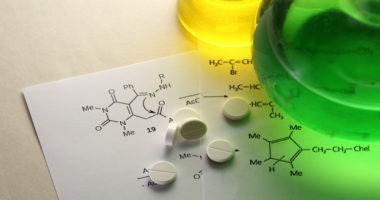Pharma Outsourcing: Emerging Pharma Versus Big Pharma
Jim Miller is founder and president of PharmSource, a GlobalData company, a provider of market intelligence on the contract drug development and manufacturing industry.
The year 2017 was a strong one for the CDMO industry with growth of 10% or more across most provider segments. Will growth continue in 2018, and what will be the uptake among key customer bases in the near and long term?
The contract development and manufacturing (CDMO) industry has developed a symbiotic relationship with emerging pharmaceutical and biopharmaceutical companies (i.e., emerging biopharma companies), whereby the two industries enable and feed off of each other’s success. Whether CDMOs can establish a similar relationship with the largest pharmaceutical and biopharmaceutical companies (i.e., global biopharma companies) may be critical to the CDMO industry’s long-term prospects.
 |
|
Jim Miller |
Emerging biopharma companies and outsourcing
Emerging biopharma companies are innovative biopharma companies that are dependent on external financing to maintain their research and development (R&D) programs. Thanks to the capabilities and talents of CDMOs and contract research organizations (CROs), emerging biopharma companies can run as nearly virtual companies, concentrating their resources on developing innovative new products and technologies rather than having to invest in expensive laboratory and manufacturing facilities. In the absence of CDMOs and CROs, investors in emerging biopharma would have had to risk more capital, fund fewer companies, and wait longer for their returns. It’s not an exaggeration to say that the biopharma investment boom of the past five years would not have been nearly as robust without the pharmaceutical services industry.
As investor dollars have poured into emerging biopharma, the CDMO industry has benefitted mightily. CDMO revenues across most provider segments grew in excess of 10% in 2017 after posting similar performance in 2016. Many companies grew 20% or better, especially active pharmaceutical ingredient (API) manufacturers. Much of that performance is due to emerging biopharma companies, which rely on CDMOs for 80% or more of their manufacturing and CMC (chemistry, manufacturing and controls) development requirements, according to PharmSource analysis. The performance of the emerging biopharma sector has enabled CDMOs to achieve growing profits and exceptional valuations from both public and private investors.
The global biopharma challenge
While CDMOs and emerging biopharma have formed a mutual dependence, global biopharma companies (i.e., the 25 largest biopharma companies by revenues) remain a big penetration challenge for CDMOs. Global biopharma has long been comfortable outsourcing routine activities, such as stability testing specialized requirements, such as clinical packaging, and processes involving mature technologies, such as small-molecule API manufacture. But despite their excellent track record in helping emerging biopharma companies develop and commercialize novel products, CDMOs have been less successful in gaining a significant share of global biopharma’s spending on high growth areas such as biologics and innovative technologies such as cell and gene therapy.
There are multiple reasons for global biopharma’s reluctance to rely on CDMOs for their highest value products and prospects. Part of it is cultural: global biopharma companies have long been vertically integrated and their executives have an ingrained preference to do things in-house. There are signs that this traditional cultural aversion to looking outside is breaking down, such as the relocation of R&D hubs to innovation centers, such as those in Boston, in order to access new scientific breakthroughs and talent. But that openness to working with outsiders hasn’t penetrated so far into the development and commercial realms.
Another reason for the reluctance by the large biopharma companies to outsource more CMC development is the desire to accumulate knowledge about the new technologies that are embedded in their pipelines.The deep understanding that the biopharma industry has accumulated about small molecules and traditional biologics, such as monoclonal antibodies, enables companies to develop cost-effective processes and formulations quickly and inexpensively. By contrast, companies are “learning as they go” when working with new technologies, such as bispecific antibodies, antibody-drug conjugates, and gene therapies. With the expectation that their pipelines will include multiple candidates embodying the new technologies, there is an understandable desire by the large biopharma companies to accumulate and retain the knowledge and experience they are gaining from current candidates to inform their work on later candidates.
Finally, we have to recognize that most CDMOs are just too small to meet the needs of global biopharma companies. Even the largest CDMOs barely match the spending on manufacturing and product development of a single medium-size global biopharma company.
Consider that an average Top 25 biopharma company has revenues of about $20 billion (Bristol Myers-Squibb and AstraZeneca are both about $20 billion in size) and spends 15% to 20% of that on manufacturing or procuring APIs and drug products. In addition, a company that size spends another $750 million or more on CMC development, including process and formulation development, clinical-trial-materials manufacturing and packaging, and analytical development and testing, etc. So that $20-billion biopharma company is spending about $4 billion annually on goods and services that can be supplied by CDMOs.
That one company’s $4-billion spend on commercial manufacture and CMC development is greater than the revenues of any participant in the CDMO industry. In fact, there are only four CDMOs with revenues of $1 billion or more, and each of those companies must cater to hundreds of customers to generate that level of activity. Even the largest CDMOs cannot supply more than a small fraction of the requirements of a single global biopharma company.
Overcoming the size disadvantage
Size can be a big advantage for a CDMO when it is trying to gain a large share of business from a global biopharma company. A larger CDMO has both more capacity and a broader scope of capabilities to absorb more work from a large customer. It should also mean economies of scale that can reduce costs, greater resources to invest in capacity and innovation, and better executive leadership with access to the global biopharma “C suite”. For the global biopharma company, a large CDMO with a broad scope of services means significant cost savings in vendor management, more leverage in price negotiations, and the opportunity for tighter supply-chain integration.
In reality, however, even the largest CDMOs are unlikely to get to a size that makes them a truly strategic partner to a global biopharma company in the foreseeable future. Scaling up through acquisition won’t get them there because the CDMO industry is so fragmented it offers few acquisition targets that can meaningfully increase a CDMO’s size. And given the current state of the industry, no global biopharma company is likely to entrust a large piece of its supply chain to a single CDMO.
If CDMOs are to build more strategic manufacturing relationships with global biopharma companies, they will need to find levers that are not dependent on size. One of those levers will be innovative business models, such as those being promoted by Patheon in its “condominium” offering and Lonza in its Ibex biomanufacturing facility. But more importantly, major CDMOs will have to come up with solutions that depend less on manufacturing capacity and more on know-how and expertise in areas, such as supply-chain management, manufacturing network optimization, risk management, and information technology.
CDMOs will never be able to overtake the largest biopharma companies in size, so they are going to have to out-think them.






